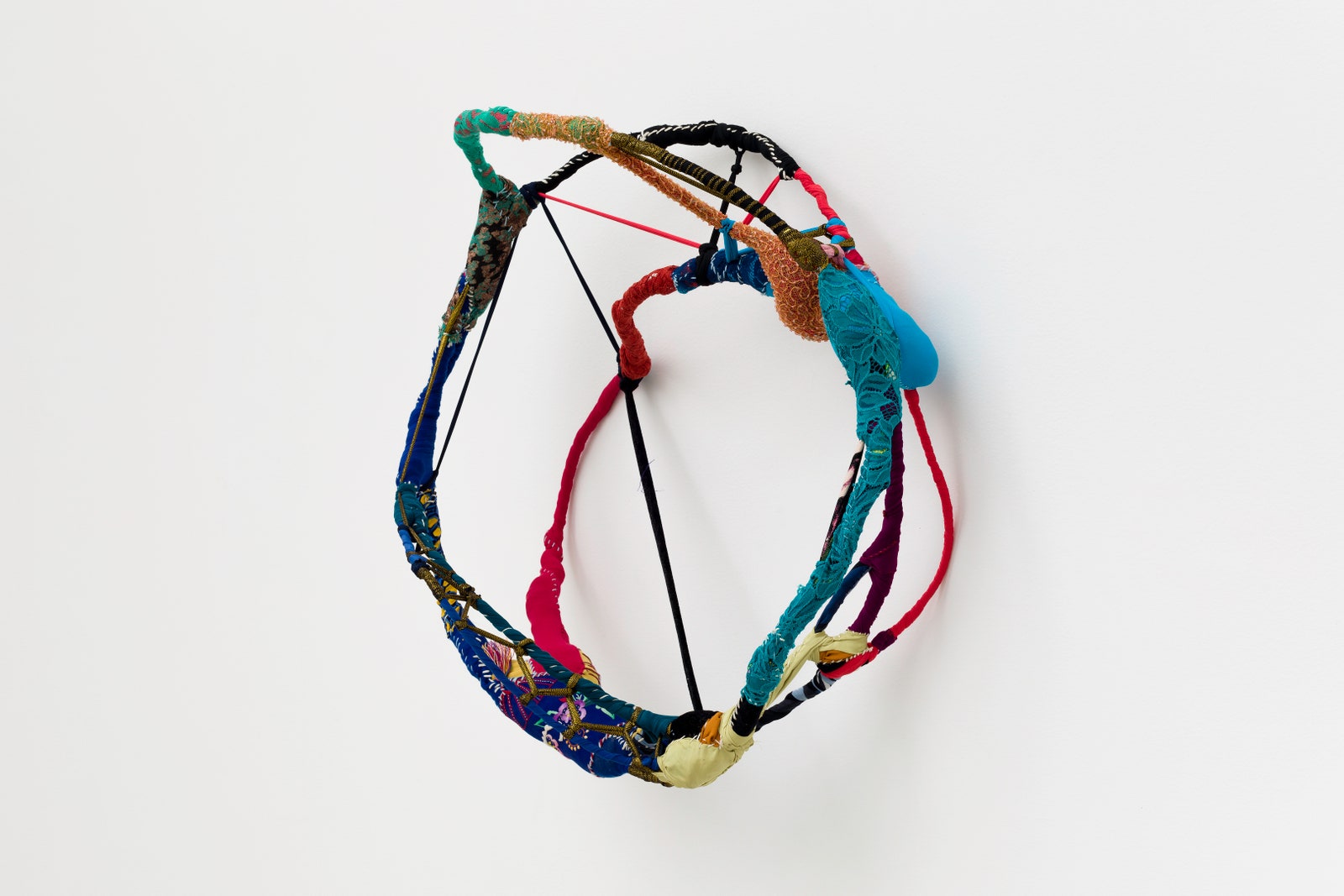Though she hasn’t had work installed outdoors before, Gomes is hardly new to bringing the natural world into her practice. “Her relationship with the land really has come to the fore with this particular project,” says Ossei-Mensah. Wood, for example, has served almost like a canvas, a base upon which she paints and sews.
And she has long held a fascination with ratios found in nature, namely the Fibonacci sequence. That’s how she chose 13 for the number of pendants in her Storm King installation and 34 for a breathtaking installation in the atrium of São Paulo’s Pinacoteca museum I was lucky enough to see in 2023.
For her work to live outside feels correct—even overdue—for Gomes. “You can’t put something on view here that is separate from the environment, separate from the trees and the green and the sky above,” Lawrence says.
Sonia Gomes was born in 1948 in Caetanopolis, a former textile hub in the Brazilian state of Minas Gerais, to a Black mother and a white father. After her mother died when Gomes was three, she was sent to be raised by her father’s family in an environment that was more bourgeois, but where, she has said, she was deprived of affection and a connection to her African ancestry. In this context, her early efforts at self-expression through clothing take on deeper meaning: They were a lifeline, a way of finding herself.
She went to law school, a practical choice encouraged by those around her, but she never stopped making things. By the time she was in her 40s, she was exhausted by the double act; she soon quit law to take classes at the Guignard University of Art in Belo Horizonte. “There, for the first time, I found freedom. I could make anything I wanted,” Gomes tells me. It was also where she finally felt able to call herself an artist, a label she previously thought only applied to those who could draw.
While she believed in her own creative vision, that confidence was not immediately shared by the art world around Gomes. Given her medium, plus her identity as a Black woman, her work was often described as craft. Yet her persistence—“I didn’t care about the name, whether it’s art or craft. I just kept on making it”—paid off, and in the mid-1990s and early 2000s, she started having smaller gallery shows in Minas Gerais. In 2012 she had her first solo show with Mendes Wood DM, the São Paulo gallery with global outposts that still represents her, alongside Pace.
















